Come midnight on 11th July, Northern Ireland is awash with hundreds of bonfires; as loyalists and Protestants commemorate the Battle of the Boyne. Aside from their strong political and tribal associations, the towering bonfires are a curious architectural phenomenon – similar, in some ways, to the medieval skyscrapers of San Gimignano. Photographer Declan O’Neill spent six years photographing the structures, as part of a fascinating series; we caught up with him to find out more…
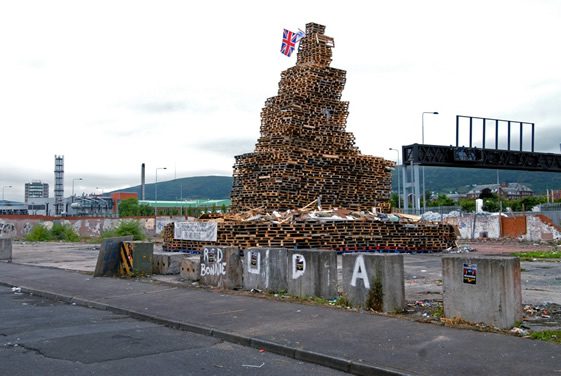
Your photographs of loyalist bonfires are an intriguing insight for those not from Northern Ireland. We’re assuming you are. Can you tell us a bit about your background?
Yes I’m from Ireland, born in 1969, grew up in County Antrim, Antrim town to be exact. My cultural background is Irish Catholic but religion plays no part in my life these days. I am definitely not a loyalist. I came to London in 1988 to study politics and history at the LSE and to get away from Antrim, a beautiful small market town on the shores of Lough Neagh, which by the late 1980s had been ruined by the town council’s redevelopment of the town centre and an influx of scum from sinkhole estates in Belfast. I have lived in London ever since but return to Ireland many times a year.
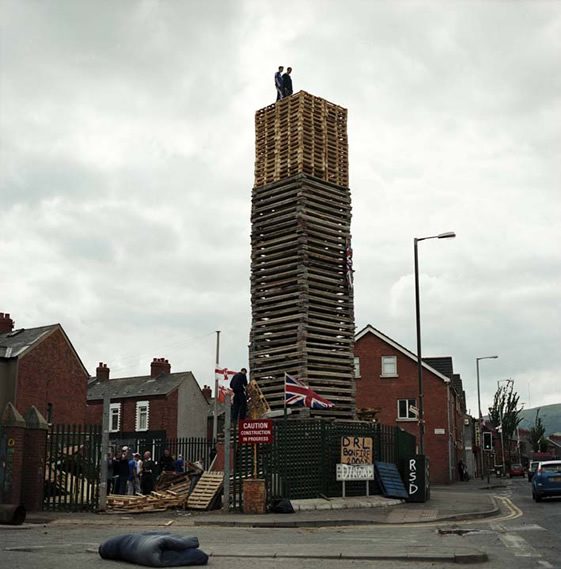
What made you decide to document the bonfires, over what period does the series span?
As a child I too built bonfires in a field behind my house. These were Halloween bonfires however and not political in anyway. All the local kids would gather wood and tyres every weekend and everyday after school. There were two fires every year in the same field, one built by the top of the road kids and one by the bottom of the road. We’d compete to build the biggest fire with the best materials. Large tractor tyres were especially prized for their burning capacity. The adults would light the fires after dark on the 31st October and most of the local people, both Catholic and Protestant, would come out for the fires. This was the 1970s and there was definitely a community spirit with all the neighbours coming together to light up the night before the darkness of another winter. It was an annual ritual I enjoyed and in which I actively participated.
I had never been to a loyalist bonfire however and was curious to see for myself what was involved. Antrim is a predominantly Protestant town and one of the largest annual bonfires is constructed in an housing estate called Ballycraigy. I started with this bonfire in 2004/2005 and searched out others. I have gone back to Ireland every July ever since. I like to work on picture series and the bonfires are perfect excuses to travel around areas that you’d otherwise never visit and speak to people you’d normally avoid. I like looking for patterns, similarities, differences in the construction. Location is also a factor. Will this location make for an interesting photograph? How does it differ from last year’s bonfire?
Despite the sectarian political nature of the fires I love their architectural forms and the rebellious way the people who build them refuse to pander to health and safety culture. I grew up on the edge of farmland and our bonfires were fairly safe, built as they were away from houses and power lines… In Belfast however people don’t really seem to care that the fire they have just built are too close to the road or are in the road. They are completely incongruous in an urban setting and they pop up in the most inappropriate places. They are dressed with sectarian and racist slogans. They are a prefect hybrid of paganism and prejudice as expressed in pallets and tyres. They remind me of wicker men or Buddhist pagodas. I have ambivalent feelings towards the surface politics but I relate to the purpose of the ritual in honouring continuity and renouncing modernity.
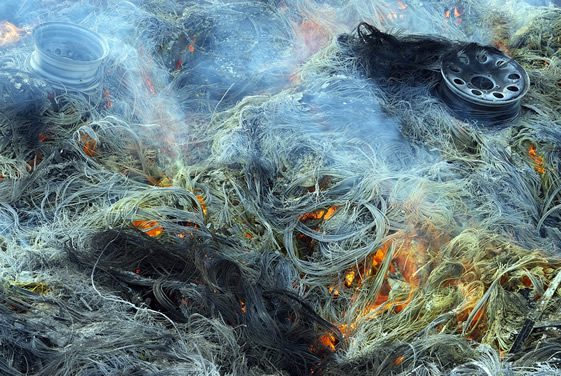
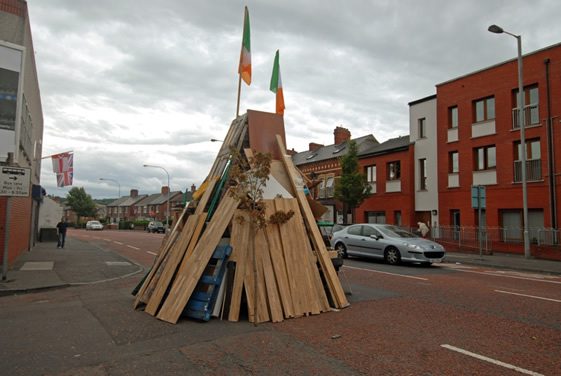
There’s one of your images where a bonfire has been built in the middle of the road, and of course we’ve heard stories of violence – has your work ever found you in any trouble?
The closest I’ve come to trouble was having stones thrown at me by some teenagers last year in Belfast’s Sandy Row. They demanded money for taking photographs. I ignored them and moved on. I find that as long as I say hello to people, ask permission and reassure them I’m not taking photos of people’s faces they tend to leave you alone. No one likes anyone creeping around with a camera. The majority of people I have encountered have been very friendly and open. I have attended quite a few bonfires and they are very much family and community affairs. I have had no problems. A lot of kids are very keen to be photographed and are very proud of their fires. There is a lot more media interest in the bonfires and the 12th July celebrations and people are very used to the presence of photographers.
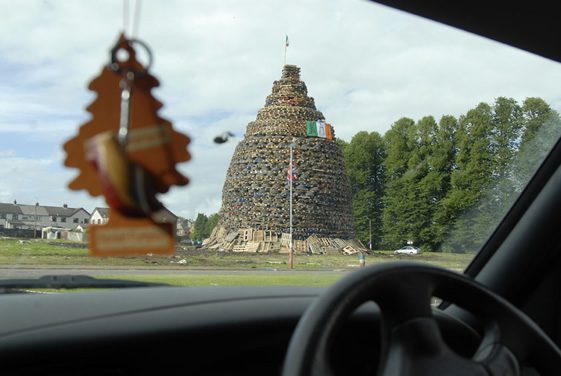
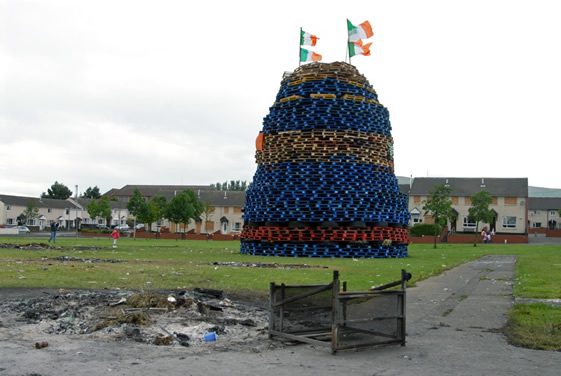
The bonfires are fascinating from an architectural perspective – is there any competition for biggest and best?
Yes James, lots of competition between neighbourhoods. Occasionally local TV and newspapers cover the bonfires and so there is a tendency to compete to be the largest bonfire and get on TV or in the paper. Ballycraigy in Antrim and Sydenham in East Belfast are usually the largest though I think last year Newtonards was the biggest. Plant hire equipment like cherry pickers and JCB are used to construct the larger fires which are mostly built by men rather than teenagers. Height is determined by the width of the base and materials available. DUMP WOOD HERE signs are common in June and July and some local businesses even deliver their waste wood and pallets on site. Sabotage is also an issue with competing neighbourhoods who sometimes set light to other group’s fires before the 11th July.
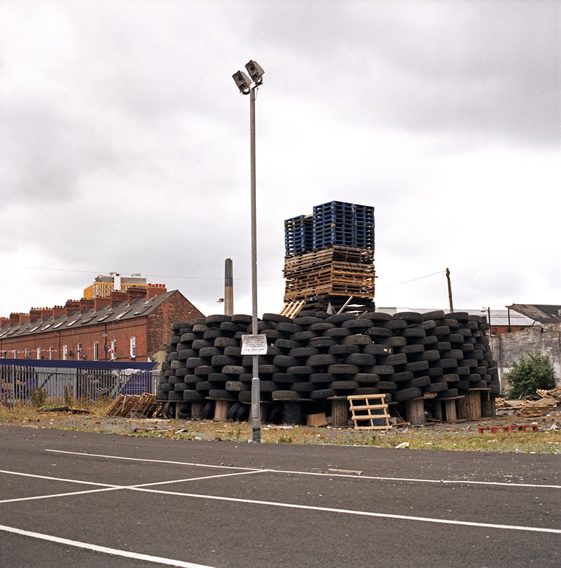
Politics and activism seem to be a theme through your other works – is this something integral to your art?
Growing up in Northern Ireland during the troubles, you can’t ignore politics. It infected every aspect of daily life and gives you a perspective that is lacking in England. But what interests me now is how the politics and prejudice have survived the ceasefires and peace agreements. How has tourism and retail affected the political landscape? Northern Ireland has an identity crisis and I am very interested in how this is marketed and expressed both politically and culturally.
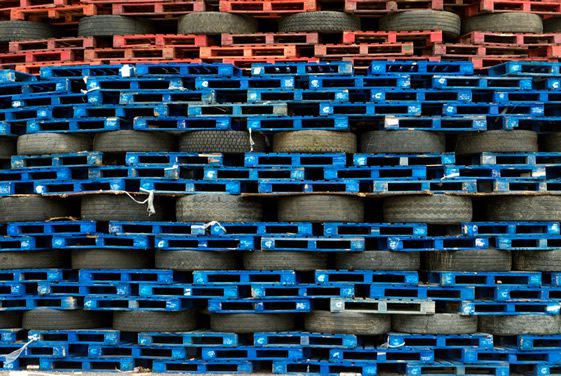
There’s many other similar curious cultural/religious commemorations throughout the world – is there somewhere or something that you’ve considered going to cover?
I love failed and dysfunctional political states. You have to remember the state of Northern Ireland is less than one hundred years old. It is a political experiment. I travelled to Burma in 2005 and I’d love to travel to North Korea before it succumbs to “market forces”.
What are you working on at the moment?
I’ve just returned form Ireland where I’ve been working on a more personal project on Antrim town and the six mile river where I fished as a boy.
Belfast Today
Northern Ireland’s vibrant capital city is known for its rich history, charming streets and friendly locals; it’s a destination with many things to do that offers something for everyone, from the striking Titanic Belfast museum to the picturesque Botanic Gardens and so much more.
Not considered a dangerous city today, Belfast is also famous for its music scene, delicious food and drinks, and the famous Black Cab tour that will take you through the political murals around the city. Whether you’re a history buff, a foodie, or just looking for a fun, lively city to explore, Belfast is definitely worth a visit.








